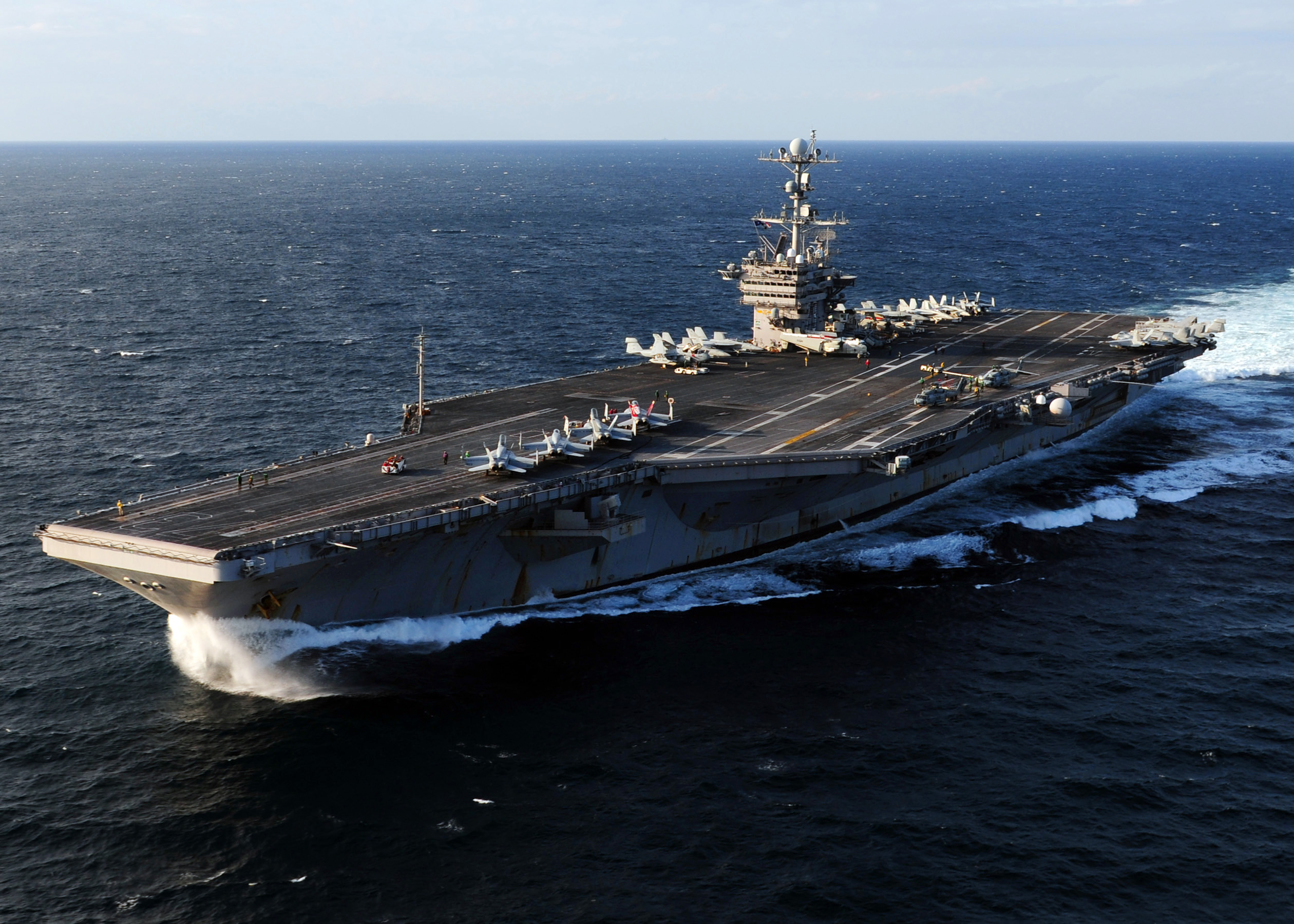The US Navy announced on April 28 that the USS George Washington, a Nimitz-class aircraft carrier, is set to return to Yokosuka, Japan, next year as its sole forward-deployed carrier, replacing the USS Ronald Reagan.
The George Washington will be deployed in Yokosuka for the second time. It was first forward-deployed to Japan in 2008 and became the first nuclear-powered carrier to do so. It served there for seven years until it was replaced by Ronald Reagan in 2015.
The George Washington is amid a multiyear process of refueling and complex overhaul in Virginia, carried out once during a carrier’s 50-year lifespan and involves refueling its two nuclear reactors.
According to the US Navy, USS Ronald Reagan will depart Yokosuka and go towards Bremerton, Washington, for maintenance purposes. USS George Washington will then be redeployed to Japan.
USS Ronald Reagan is scheduled to leave Japan in the spring of 2024. However, USS George Washington is not expected to arrive until the latter half of the year.

The statement from the service mentioned that the United States highly regards Japan’s efforts toward maintaining peace, security, and stability in the Indo-Pacific region.
The US Navy also noted that the combined forces of both countries, including the Japan Self-Defense Forces, are essential components of the alliance and are crucial in achieving their shared strategic goals.
Cmdr. Katie Cerezo, the spokesperson for Naval Forces Japan, told the media on April 28 that the Navy deploys many of its cutting-edge technologies in Japan as a testament to the significance of the alliance between the two nations.
She added that the handover of responsibilities would guarantee the continuous presence of aircraft carriers in the region.
The fiscal 2019 US defense budget contained a provision that restricted the overseas forward deployment of naval vessels to a maximum of 10 years. This means that Ronald Reagan would need to be replaced by October 2025, as it would reach the end of its 10-year mark.
The rule was implemented after two collisions involving Yokosuka-based destroyers in 2017, USS John S. McCain and USS Fitzgerald.
Congress concluded that the frequency of rotation for naval vessels needed to be increased to prevent such incidents and to ensure that the vessels were maintained in top condition.
World’s 1st Carrier-Based Unmanned Aircraft
As mentioned, USS George Washington is currently undergoing nuclear refueling and maintenance at Newport News shipyard in Virginia.
As part of the military budget for the fiscal year 2019, the US Navy was given permission to modify the compartments and structure of the USS George Washington.
One of the upgrades to George Washington is the capability to accommodate the MQ-25A Stingray, a 50-foot unmanned aircraft designed to refuel other planes while in flight, thereby increasing the range of the carrier air wing.
Over the past few years, the US Navy has developed the MQ-25 Stingray, an unmanned tanker aircraft with secondary intelligence, surveillance, and reconnaissance (ISR) capabilities.
According to Boeing’s website, the Stingray has a flight range of 500 nautical miles and can provide mid-air refueling to aircraft such as F-18 Super Hornets, EA-18G Growlers, and F-35C Lightning II stealth fighters, with a fuel delivery capacity of up to 16,000 pounds.
The drone is considered a vital component of the future for carrier strike groups and air wings. It is the world’s first operational, carrier-based unmanned aircraft, according to the US Naval Air Systems Command.
In 2018, Boeing secured a contract worth US$805 million to build four Stingray models by August 2024, beating competitors Lockheed Martin and General Atomics. In September 2019, the company successfully conducted the maiden flight of the initial prototype.
As the Pentagon remains focused on the prospect of future conflict in the Indo-Pacific region, the need for aerial tanking will become increasingly vital to expand the range of carrier-based assets.
This need is especially crucial for the Super Hornet, given that the plan to install conformal fuel tanks on the aircraft has been canceled. The MQ-25 is essential for using carrier-based drones to carry out various air warfare duties.
- Contact the author at ashishmichel(at)gmail.com
- Follow EurAsian Times on Google News